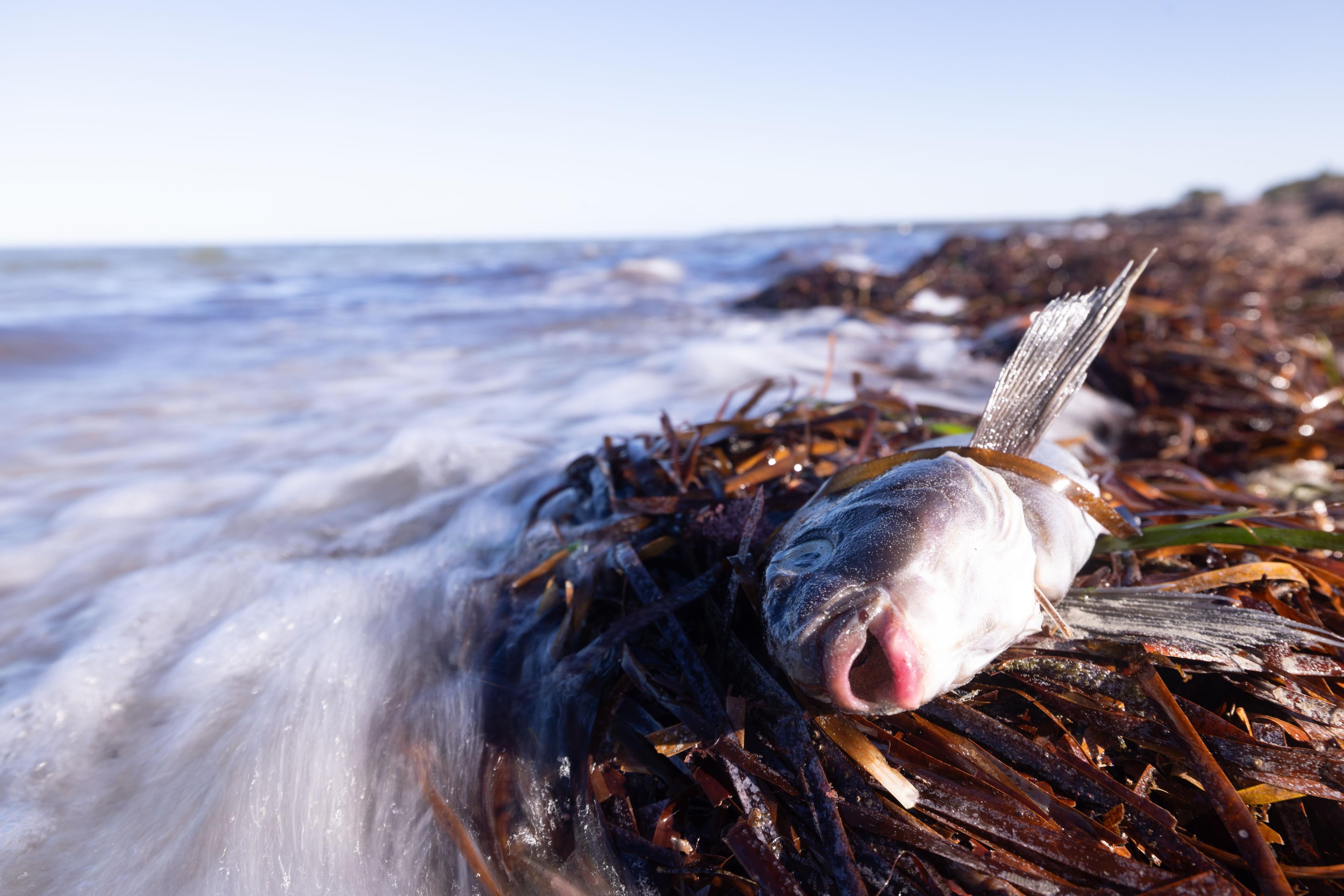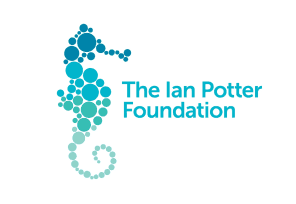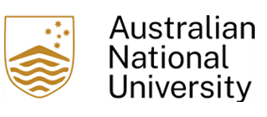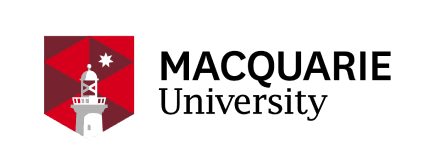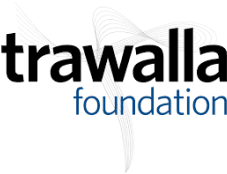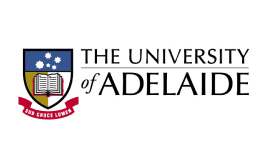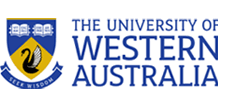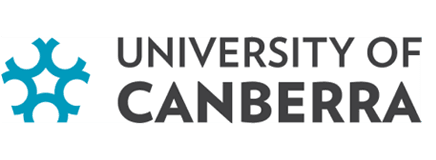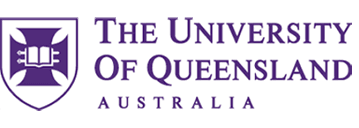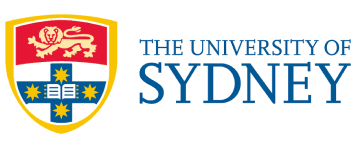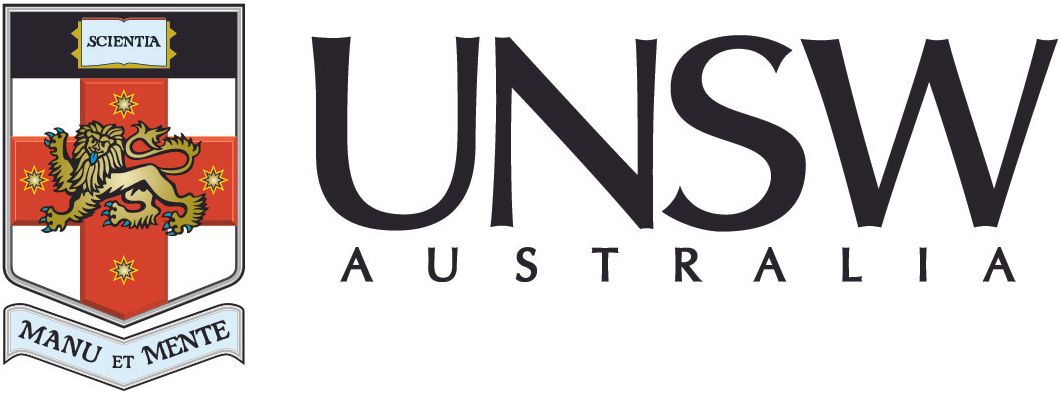Scientists release list of 7 actions needed to respond to SA algal bloom and broader marine heatwave
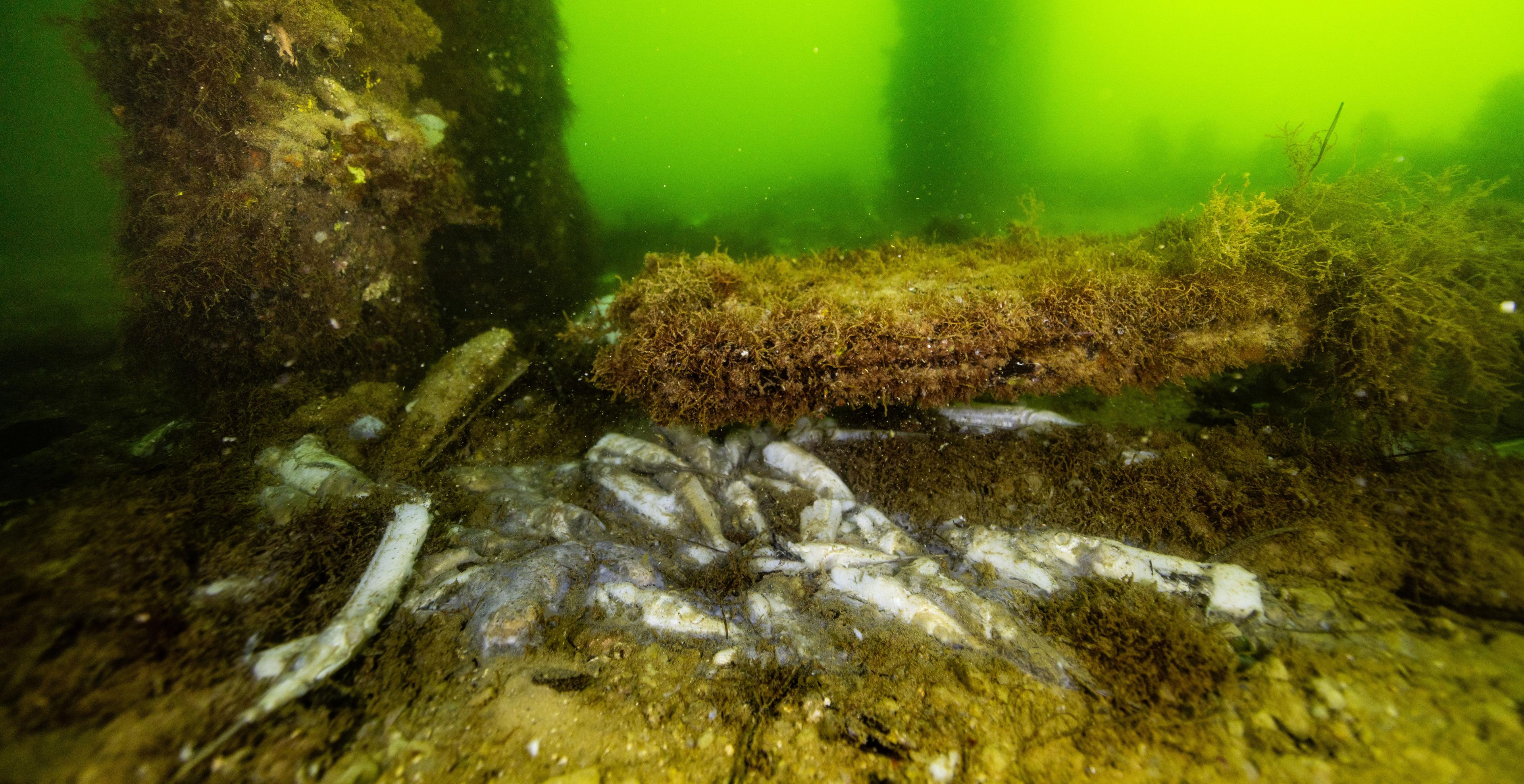
Dead garfish rotting on the ocean floor within the algal bloom at a site surveyed in July 2025 by the University of Tasmania’s Institute for Marine and Antarctic Studies and Flinders University, through the Great Southern Reef Research Partnership. Image: Stefan Andrews courtesy of Great Southern Reef Foundation.
Media Release
24 July 2025
Man-made, inevitable, and likely to recur regularly without major action, that is how the Biodiversity Council has labelled the catastrophic toxic algal bloom impacting 500 km of South Australia's coastline.
They also have a warning; this is not just a South Australian problem. The impacts of the bloom will be far-reaching, and the bloom itself is just one consequence of the marine heatwaves ringing the country.
The independent expert group, founded by 11 universities, has released a report outlining seven key actions needed to urgently respond to the algal bloom, and to prepare for a more dangerous future nationally.
The actions proposed for Australian and state governments to respond to this crisis and to prepare for an increasingly dangerous and unstable future are:
- Investigate and fast-track emergency interventions for species at high risk of extinction or major population declines.
- Immediately invest a minimum of $10 million to start research to understand the impact of this bloom and inform plans for what to do when the next bloom hits.
- Accelerate Australia’s decarbonisation efforts and become a global leader in climate action.
- Reduce nutrient and dissolved carbon pollution.
- Restore and protect marine ecosystems
- Establish a long-term monitoring program for the Great Southern Reef.
- Establish mechanisms to plan for and respond to catastrophic natural disasters.
The report was produced by a team of scientists from five Australian universities including The University of Adelaide, The University of Tasmania, Monash University, The University of Melbourne, and The University of Western Australia.
More than 450 marine species have been observed washed up across South Australian coastlines, with over 14,000 observations recorded by citizen scientists.
Biodiversity Council member Professor Gretta Pecl from the University of Tasmania’s Institute for Marine and Antarctic Studies and Centre for Marine Socioecology said,
“What we see washing up on beaches is just a tiny fraction of the animals actually killed, with most animal bodies left rotting on the seafloor.
“Because of the connectivity of oceans and their food webs, the impact of this harmful bloom will massively exceed the boundaries of the physical bloom itself; there will also be cascading consequences for other regions of Australia.
“The scale of wildlife death nationally from this marine heatwave is likely to be equivalent to the Black Summer Bushfires, considering both the algal bloom and unprecedented damage to coral reefs on the east and west coasts.
“The exact death toll would be impossible to determine as monitoring of marine environments and species is fairly lacking in Australia, but we cannot wait to act. It is vital for all governments to heed this wake-up call and act.
“The most important action is to rapidly decarbonise our economy, as climate warming is creating a very dangerous future, with not just more harmful algal blooms but also more frequent and intense coral bleaching, floods and fires.
“In the past, Australian governments have mobilised significant funds to address natural disasters when they occur, as we saw with the $2 billion National Bushfire Recovery Fund, which included over $200 million for wildlife recovery measures.”
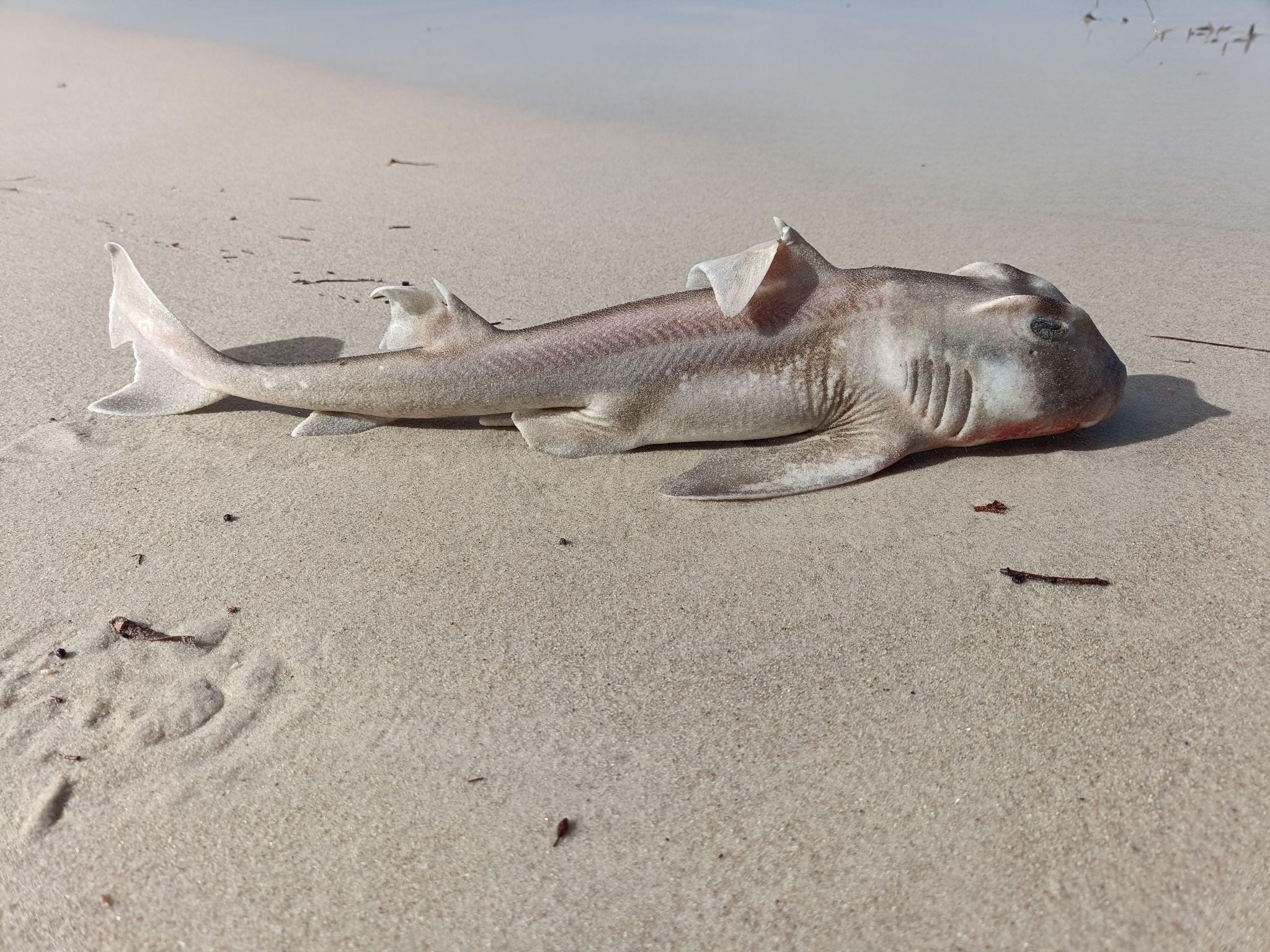
A dead Port Jackson shark - one of 450 species observed washed up on the shores of South Australia. Image: smurf01 / iNaturalist CC BY-NC
Biodiversity Council member Professor Nicki Mitchell from the University of Western Australia’s Oceans Institute said we can and must prepare for a more dangerous climate future.
“Due to man-made climate change, the frequency and intensity of natural disasters that harm biodiversity, industries and communities will only increase.
“This includes not just harmful algal blooms, but also marine and terrestrial heatwaves, floods and bushfires.
“Many of these events are predictable several months ahead of the event - Australia has developed world-class forecasting tools that sectors such as agriculture use routinely.
“These predictive tools can be linked to dynamic and coordinated planning to minimise impacts of disasters on threatened biodiversity, and we should be doing this now.”
Professor Ivan Nagelkerken from the University of Adelaide Environment Institute studies the effects of climate change on fish and marine ecosystems. He said Adelaide’s coast will always be vulnerable to algal blooms.
“South Australia’s gulfs are particularly vulnerable to algal blooms due to coastal nutrient inputs, warming shallow waters and poor water exchange.
“As warmer water caused by climate change and nutrient pollution by humans are key drivers of algal blooms, we must collectively do all we can to reduce coastal nutrient inputs and greenhouse gas emissions.
“Locally, we can also build the resilience of ecosystems to recover by protecting and restoring marine ecosystems, like kelp forests and seagrass beds, to support bigger fish populations as well as absorb carbon and improve water quality.
“Species with large populations typically have higher capacity to survive and recover from detrimental environmental conditions due to the sheer numbers of individuals, and because larger populations can contain a wider variety of genetic phenotypes and genotypes, some of which might be better able to cope with changing environmental conditions.”
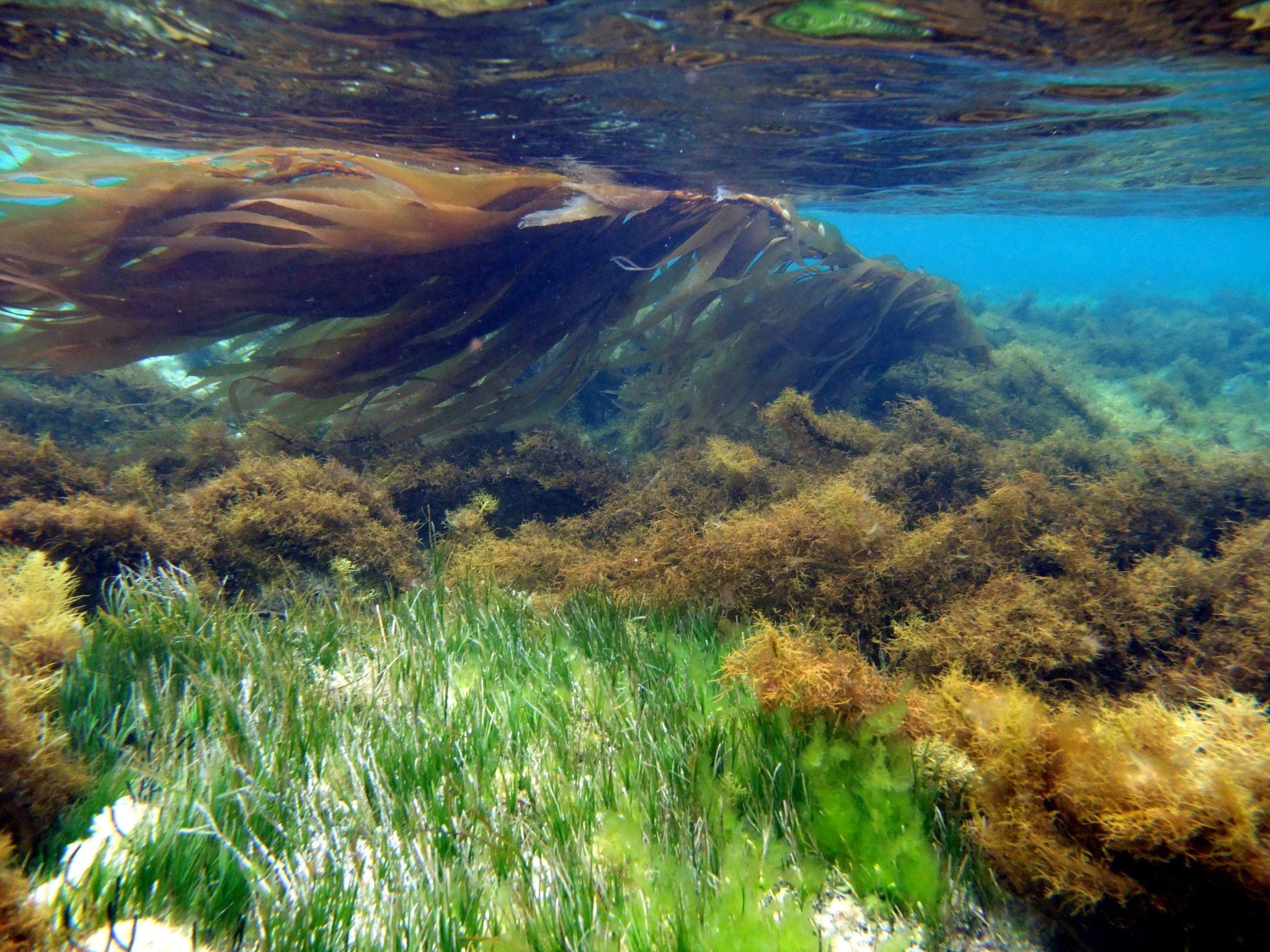
Vegetated marine habitats can help filter out excess nutrients that lead to algal blooms. Image: Janine Baker / iNaturalist CC BY-NC
Dr Kate Quigley, a principal research scientist at The University of Western Australia Oceans Institute and James Cook University, studies heat resistance and stress in corals. She said the effects of this year's heatwave are enormous.
“This year has been unprecedented for Australia, because we've seen simultaneous extensive and severe bleaching occurring on the east coast at the Great Barrier Reef and on the west coast, stretching from northern Western Australia right down to Shark Bay, including the Ningaloo and the oceanic islands off the Western Australian coastline.
“It has been catastrophic for reefs in terms of the unprecedented spatial extent of reef impacting both coastlines, but also the magnitude of the heat and that's translating to quite extensive coral death, especially in Western Australia, with up to 90% mortality in some areas.”
